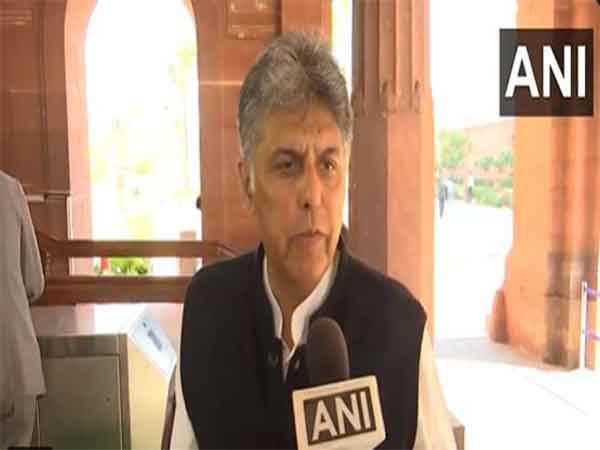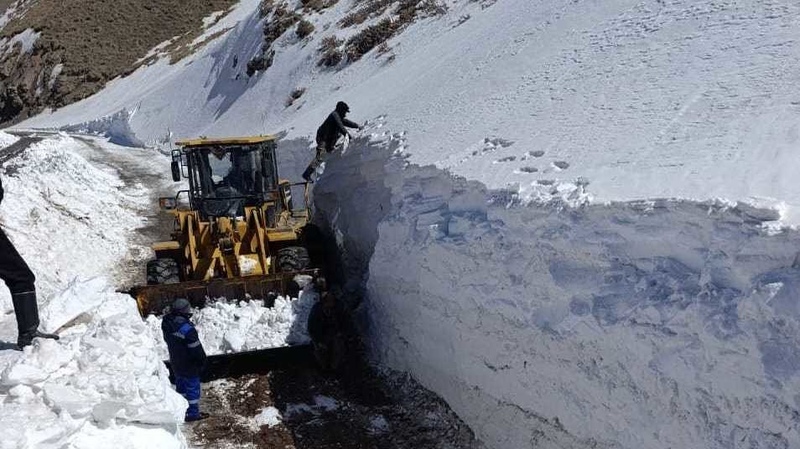
Apr. 2—MITCHELL — With another spring planting season approaching, farmers in Mitchell and the surrounding areas are again training their eyes skyward in the hopes more precipitation is on the way to help ease the effects of a widespread drought across the state. It is probably the first and foremost thought on the minds of producers as they gear up for planting, which is expected to get underway in the next several weeks to a month.
"Farmers really care about their moisture," David Klingberg, executive director of the Davison County Farm Service Agency, told the Mitchell Republic. "It is definitely dry, and most guys are concerned about the future. Many of us understand by now that the weather is just one of the many things that we can't control, and so while we complain about it, we're just resolved that we're not going to fix it.

" It's a different scene across the state than it was at this time in 2024. According to the United States Drought Monitor, the entire state of South Dakota is currently under some level of drought conditions. The worst conditions as of March 25 were in the southwest portion of the state, much of which registered as level D3, which indicates extreme drought.
The rest of the state is better, but still dry. Much of the north central, northeastern, central and south central portion of the state is under a D2 level, meaning severe drought. The remainder of the state is under D1, or moderate drought conditions.
At this time in 2024, only about 50% of the state was experiencing drought conditions. The area received a hard soaking mid-summer last year, but since then precipitation in the form of rain or snow has been relatively scarce. Several surrounding states are experiencing similar conditions.
The United States Department of Agriculture reported March 31 that South Dakota topsoil moisture supplies rated at 52% very short, 37% short, 11% adequate and 0% surplus. On subsoil moisture, figures were 51% very short, 38% short, 11% adequate and 0% surplus. "In June of 2024, we got 11 inches in three days, so were we okay before that? Yeah.
After that? Yeah. But in July and August it turned hot and dry and we didn't get a whole lot after that, so (the dry conditions) started way back in June," Klingberg said. "We just didn't get any substantial moisture after that.
" There isn't much producers can do to counteract Mother Nature, Klingberg said. There are always challenges associated with planting and harvest, with farmers wrestling with crop choices based on potential prices or using particular strains of seeds that do better in certain conditions. Adding drought conditions only throws more questions into the mix.
"The problem with farming is the variables, there are just too many to consider. At one point in time some guys were saying they were going away from soybeans because there were too many soybeans produced and the price would drop. Others were conflicting that because everybody thought that others were going in the opposite direction," Klingberg said.
"It's a mind game where we try to figure out what will make us the most money. Then throw the drought in there." Farmers could tailor their seeds to variants that are drought resistant, a common practice depending on conditions.
Dry conditions could also elevate the danger of field fires, something that producers will have to keep an eye on. Spring is not an uncommon time for landowners to burn their CRP acres, but with winds and dry conditions there could be less of that in 2025. On the plus side, there should be little need to avoid low spots in the field, as there is little standing water as tractors are prepared to head out and plant.
It's a chance for farmers to go fence line to fence line with their planters, but without timely rain in the future, the results could be moot, Klingeberg said. "I would think that if they have a wish list and they could get what they want, I would say a couple of inches this week and a couple inches next week. I think they would take a few inches of rain to make up for the drought until they really want to hit the field hard and then hold off," Klingberg said.
"And then a couple of inches every week." Temperatures for the next couple of weeks are expected to see highs ranging from the mid-40s this week to as high as the mid-70s later in April. Dry planting conditions also mean dry conditions for livestock, something else producers will be keeping an eye on, Klingberg said.
"Guys are heavy into calving, if not all the way through it. Some stock dams are low. Those calves don't have the immune system built up and when it's dry and dusty it gets in their lungs and causes problems, so they're concerned about that," Klingberg said.
"Everybody is busy, and everyone is getting ready for the next thing, either fixing fences or picking rocks or getting ready for fertilizing and tillage. Everybody seems to be busy." The United States Department of Agriculture is predicting a rise in corn acres and a drop in soybean acres in 2025.
According to the latest survey from the National Agricultural Statistics Service, a division of the USDA, South Dakota producers intend to plant about 6.3 million acres of corn this year, which is a 7% bump from 2024. Less soybeans are expected to be planted, however, with about 5.
10 million acres expected, a drop of 6% from last year. Hay acreage is also expected to be down, with 2.7 million acres predicted, also down about 6% from last year.
Winter wheat seeded in the fall of 2024 is estimated at 800,000 acres, down 7% from last year. Other spring wheat planting intentions are at 660,000 acres, unchanged from last year..











